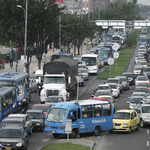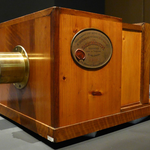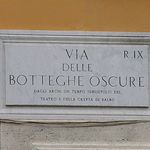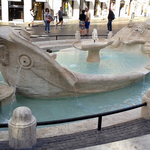Piazza Venezia
It is situated almost in the geometrical center of Rome and has
130 x 75 meters in size. It is considered to be the point
of confluence of the principal urban roads. The square appeared
in '400 in connection with Palazzo Venezia which gave the name to it.
Untill 800 it served as the arrival point of "Corsa dei Barberi".
It was a race of the Barberia horses which were running without jockey.
This event took place during the carnival in
Piazza del Popolo
along a straight stretch of the Via del Corso decked with flags.
It was reconstructed at the end of 800 because of creation of
Vittoriano,
which is a monument to Vittorio Emanuele II constructed in front of
the Via del Corso.
Beside Via del Corso other four roads are joined in Piazza Venezia.
The Via Cesare Battisti leading to the Via XIV Maggio connects it
with Via Nazionale. The Via del Plebiscito which is almost
the continuation of the previous one joins it to the Corso
Vittorio Emanuele II for to reach
Piazza San Pietro.
The other two roads which conincide in the Piazza Venezia from
two sides of the Vittoriano are the Via dei Fori Imperiali coming from
Colosseo
and from
Fori
and Via del Teatro di Marcello from
Aventino
and Ostiense areas.
On the right of the Vittoriano there is the Palace of the General
Insurance of Venice which is in the opposite to the Palazzo Venezia.
The first arrangement of the square was in the style of Reinassance.
But the current appearance of the square is quite entirely owed to
the serious changes of the XIX century and of the regime.
At the corner of the square one can notice a gigantic female bust
called in the people "Madama Letizia". It was known to be the only
one female statue of the group of so-called statue parlanti,
to which at night satirical epigrams and the critica of the papal
government were fixed to.
In the memory of many people this square was a place of the oceanic
meetings of the Fascism: here in "Forum of Italy" Mussolini harangued
the crowd from the "balcony" of the Palazzo Venezia that was the seat
of the head of the government in the period from 1924 until 1943.
Here the assemblies of the Chief Council of the Fascist Government
were held.
This palace was built in 1455 as a private residence of the Venetian
cardinal Pietro Barbo who then became the Pope with the name of
Paolo II. The building was inlarged with the new façade of
the San Marco basilica.
It became a work of various masters among which were Giuliano di
Sangallo and Leon Battista Alberti. The last one was the first in Rome
who declared by this building the Renaissance principles still
recognizable in the portal, in the courtyard and in the internal decoration.
He joint Medieval and Renaissance elements in the design. Originally
it had two towers. Then the "balcony" had been added in 1751.
In the interior one can find the famous sala
del Mappamondo with the frescos of Mantegna. It was a private
study of Duce.
In 1564 it was the seat of the Venetian Republic Embassy and in 800
it was the seat of the Austrian one.
Nowadays it is the museum full of aras, arms, silvery e ceramics.

 The records of Rome. Big numbers, not always enviable, for a big city.
The records of Rome. Big numbers, not always enviable, for a big city. New Phot-O-Matic section. To spend some time looking at photos (also) of Rome.
New Phot-O-Matic section. To spend some time looking at photos (also) of Rome. The administrative, urban, toponymic and imaginative subdivisions of Rome.
The administrative, urban, toponymic and imaginative subdivisions of Rome. Notice for tourists: in Rome you drink for free. Historical fountains and 'big noses'.
Notice for tourists: in Rome you drink for free. Historical fountains and 'big noses'. Free museums return on the first Sunday of the month.
Free museums return on the first Sunday of the month.